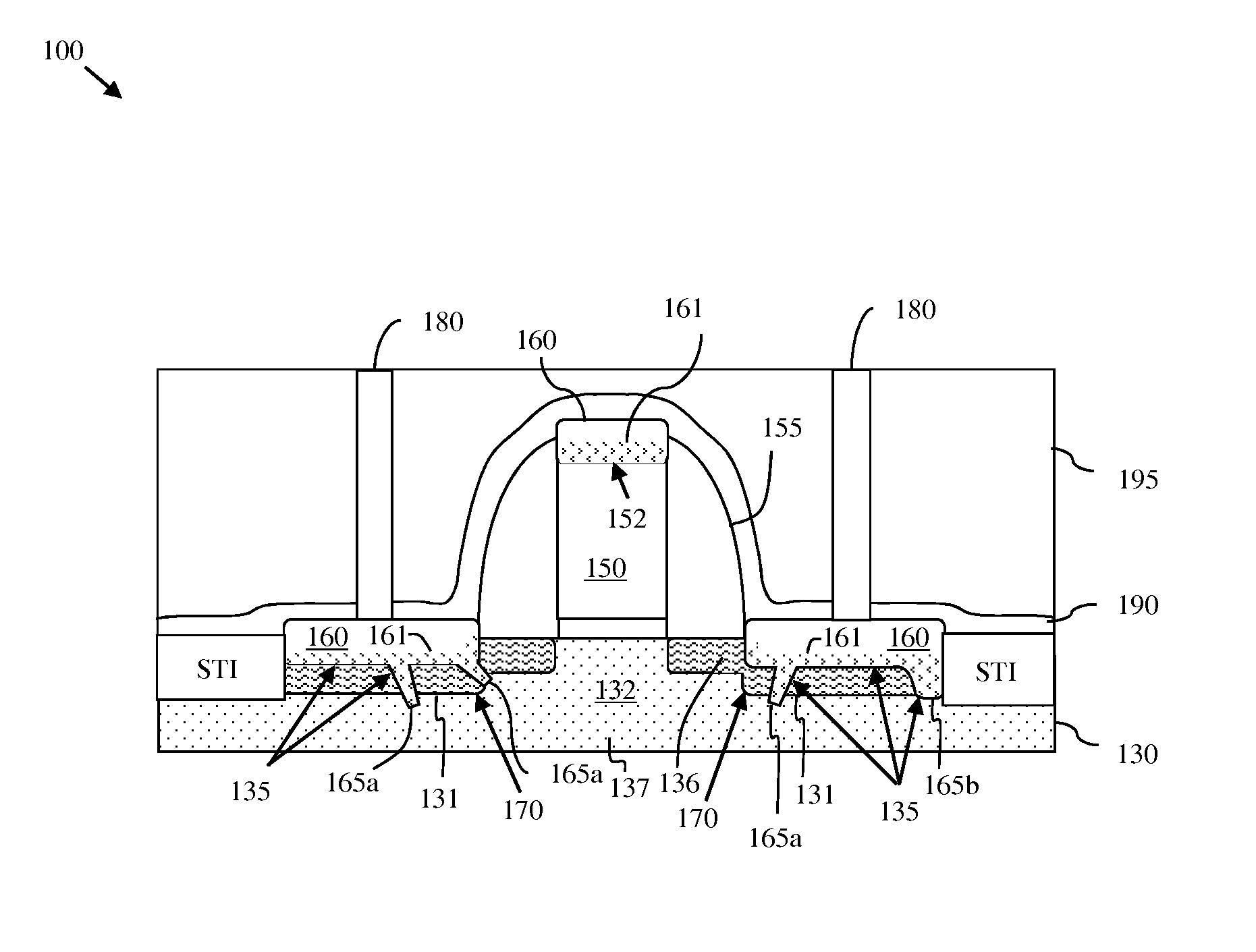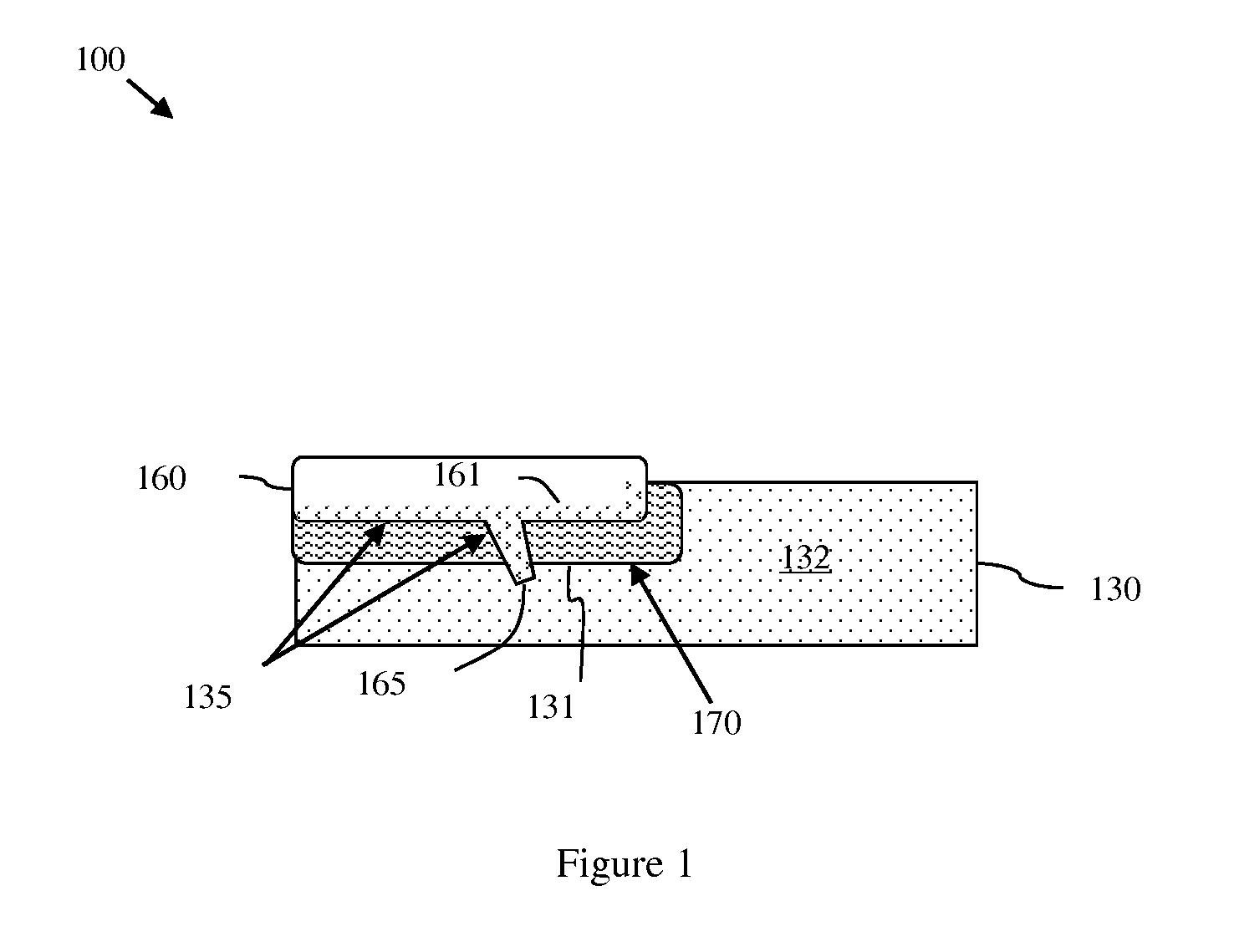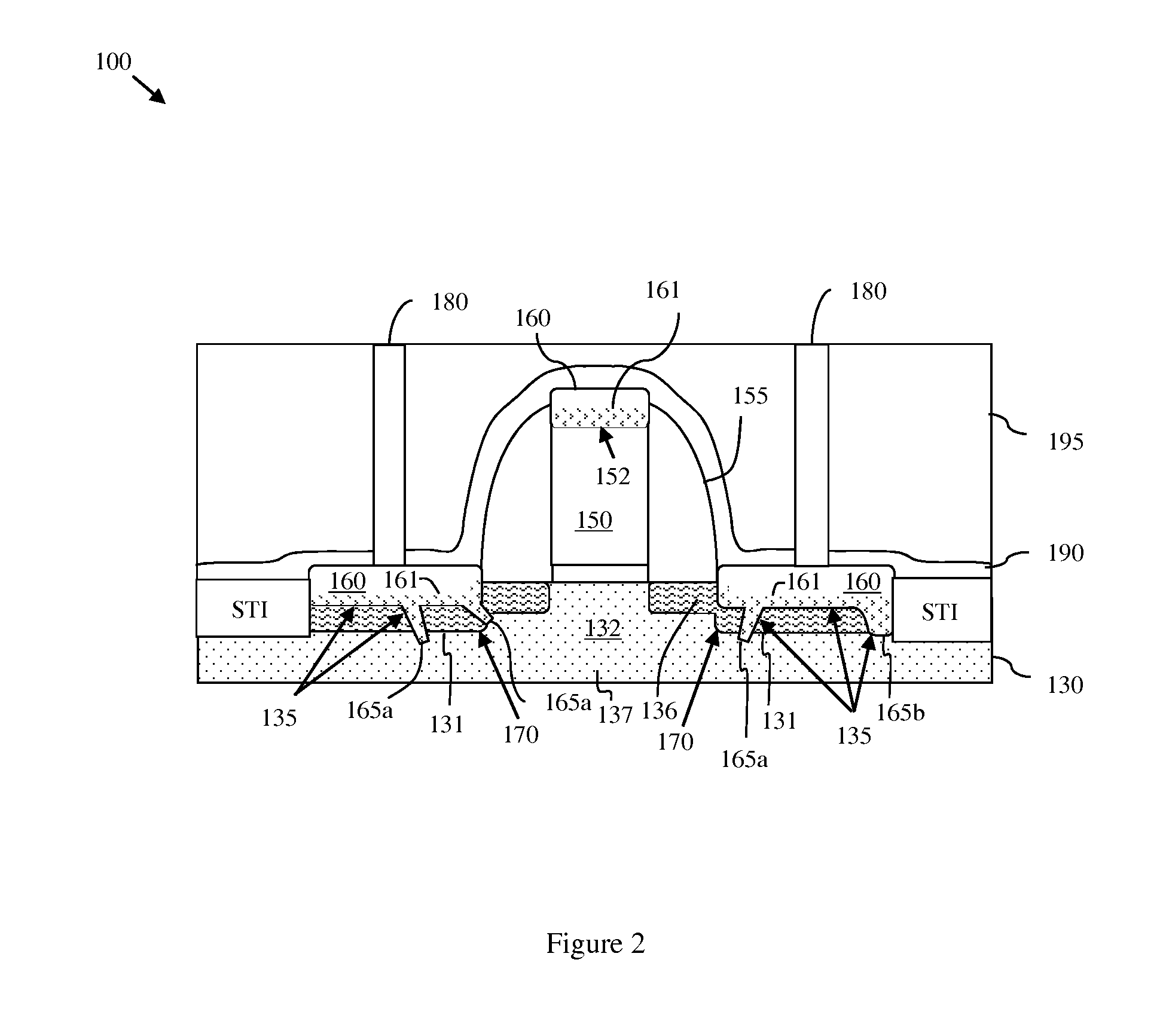Semiconductor device with reduced junction leakage and an associated method of forming such a semiconductor device
a semiconductor device and junction leakage technology, applied in the field of semiconductor devices, can solve the problems of non-functional devices, complex devices, and design of p-n junctions in such devices, and achieve the effects of reducing leakage, reducing leakage, and increasing the schottky barrier heigh
- Summary
- Abstract
- Description
- Claims
- Application Information
AI Technical Summary
Benefits of technology
Problems solved by technology
Method used
Image
Examples
Embodiment Construction
[0022]As mentioned above, in order to overcome problems associated with continued size scaling in semiconductor devices (e.g., field effect transistors, diodes, etc.), the designs for p-n junctions in such devices have become more complex. For example, in order to decrease the drain-induced barrier lowering (DIBL) associated with size scaling in field effect transistors, the current designs for source / drain to channel junctions often include shallower source / drain regions, higher source / drain doping levels, halo regions, etc. Unfortunately, some of these current designs are more sensitive to defects which cause increased junction leakage (i.e., current leakage through the p-n junction).
[0023]For example, referring to FIG. 13, in a field effect transistor 1 with a relatively shallow source / drain 31 to channel 32 junction 70 metal silicide defects 65 can result in shorts which cause junction leakage. Specifically, field effect transistors are often formed with metal silicide layers 60...
PUM
 Login to View More
Login to View More Abstract
Description
Claims
Application Information
 Login to View More
Login to View More - R&D
- Intellectual Property
- Life Sciences
- Materials
- Tech Scout
- Unparalleled Data Quality
- Higher Quality Content
- 60% Fewer Hallucinations
Browse by: Latest US Patents, China's latest patents, Technical Efficacy Thesaurus, Application Domain, Technology Topic, Popular Technical Reports.
© 2025 PatSnap. All rights reserved.Legal|Privacy policy|Modern Slavery Act Transparency Statement|Sitemap|About US| Contact US: help@patsnap.com



